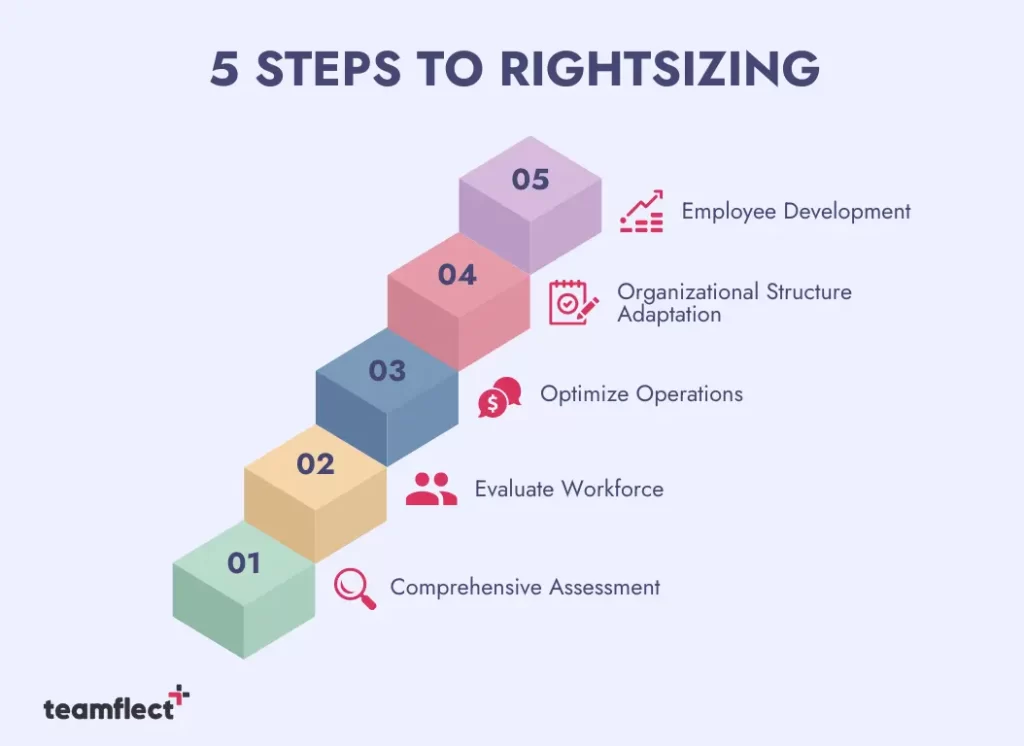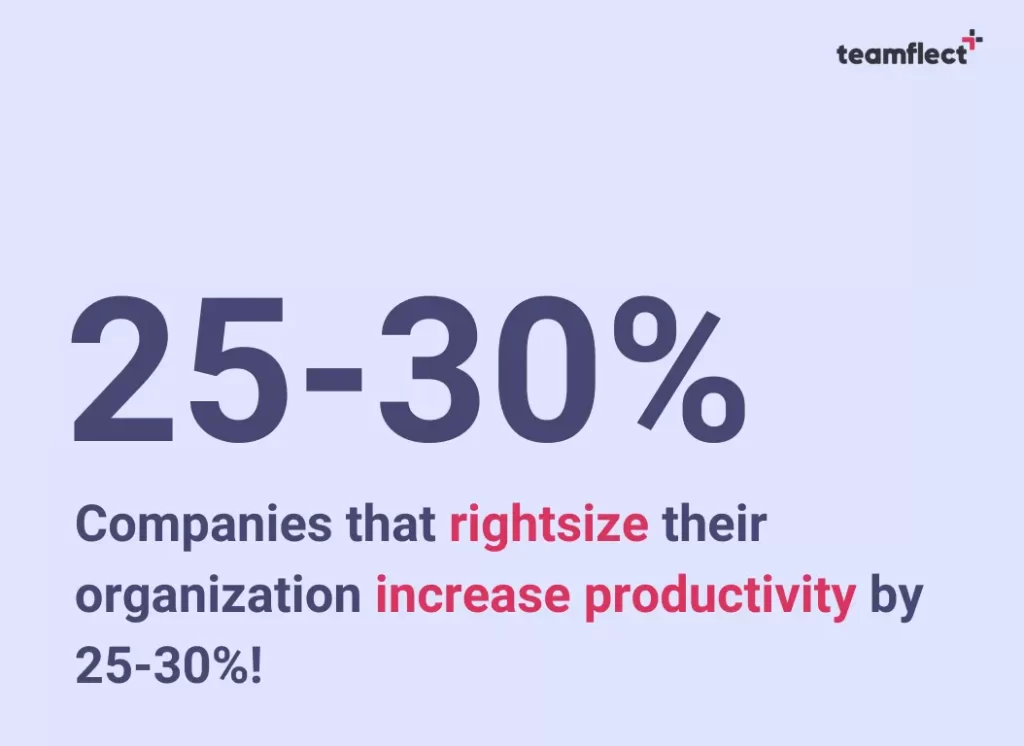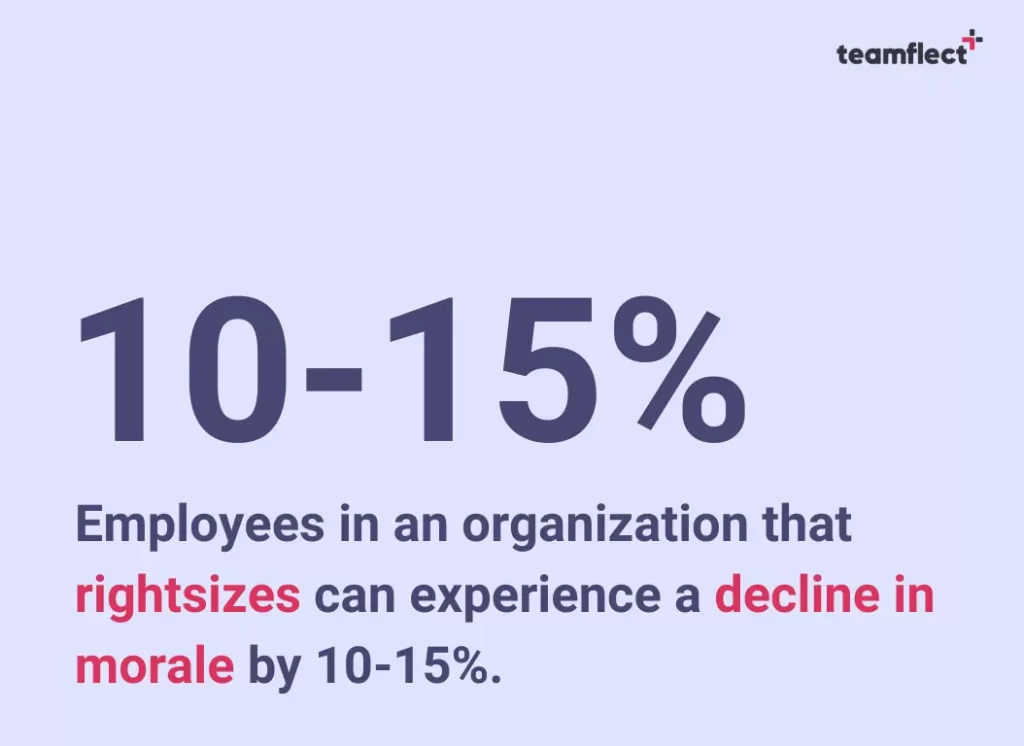In a time when we’re all constantly on the move, “bigger is better” no longer applies. Instead, we now have a more mindful approach that considers the right fit. The workspace landscape is no different. As more and more professional start to understand just how important rightsizing can be for their environment, we see the practice more commonly considered.
Let’s dive deeper into what rightsizing is, the definition of rightsizing, and what it means to implement rightsizing in your workspace so that you can use this technique yourself and curate it as your unique needs require.
Table of Contents
What Is Rightsizing?
Rightsizing is a strategy that intentionally adjusts the size scale or scope of the workspace to ensure optimization of efficiency and productivity.
While there are many meanings behind the term within different industries, right-sizing meaning in the business world refers to the literal size of the company or its operations in hopes of optimizing overall performance to the fullest.
The process behind rightsizing typically requires a thorough investigation and analysis of the current market. You would have to have a deep understanding of the current trends, your internal capabilities, and future growth prospects. During this undertaking, you may also have to adapt to consumer demands, implement new technologies and tools, or realign your business functions.
Overall though, rightsizing is an incredibly useful tool that will make sure you’re not carrying more workforce than you need and at the same time, you have just enough that your business is thriving and able to stay competitive.
How To Rightsize Your Company In 5 Steps
Here are five simple steps that you can consider if you wish to rightsize in your company and aim to enhance overall efficiency within your organization!

1. Comprehensive assessment:
Start your journey with a thorough analysis of your company’s current state. Analyze and understand your financial performance, market conditions, and internal operations. Identify which areas are currently efficient and inefficient. Keep in mind your overall goals in the short and the long term to make sure that your rightsizing efforts are in alignment with your strategic viewpoint.
One great way to understand the internal side of your company would be to use a performance management tool. Teamflect will make sure that all your goals, your progress, and the performance of your employees are laid out in front of you clearly and available at all times! Try Teamflect today for free and see how well it can fit into your day-to-day, especially since it’s fully integrated into Microsoft Teams!
2. Evaluate Workforce:
See how well your current workforce matches your company goals. Assess and determine whether the current and future needs of the organization can be met with the talent within. Make sure to highlight which roles in your workspace are redundant or could outsourced or automated.
Consider cross-training your employees. This way you’ll be able to support them throughout the rightsizing process since it can also mean layoffs, early retirements, or other adjustments. Cross-trainings will provide them with flexibility and you will be able to make use of the employees you already have in your company.
3. Optimize Operations:
This step is all about eliminating inefficiencies. Embrace new technology, automate repetitive tasks, enhance productivity, and reduce unnecessary interventions. Evaluate all processes, from daily meetings to chain logistics, to highlight all points of improvement.
4. Organizational Structure Adaptation:
Consider your current structure and keep in mind the analysis you’ve made so far regarding operations, workforce, and the current market. See how well your current structure represents your company’s vision and goals in light of your recent understanding.
Redefine roles where necessary and flatten any unnecessary hierarchies to improve transparency and communication. Make sure that the structure you settle on fosters an environment of collaboration and support in a way that serves your company objectives.
5. Employee Development:
Rightsizing doesn’t only mean layoffs and inducements to the workforce. It also means to retain and train a valuable workforce that will enhance the abilities of your employees and help them become more flexible. This is a way to create a win-win situation between you and your employees and help you both. A well-trained and supported workforce will ensure your long-term sustainability.
Don’t forget, rightsizing will be an ongoing process and it will require continuous follow-ups and analysis to make sure you’re on track. Make sure to communicate throughout this process and stay transparent to keep employee motivation and engagement high. Without them, a smooth transition is impossible.
Why Do You Need To Rightsize?
The short answer is, it’s a basic necessity of business strategy. If you have a
thorough understanding of your market, your workforce, and your internal structures, you’re that much more likely to have long-term success.

Pros of Rightsizing:
Here are some pros to rightsizing:
- Improved Efficiency: Starting with the obvious, when the redundancies are eliminated, workflow overall will be optimized. The natural result is that your organization will operate more efficiently.
- Cost Reduction: Similar to efficiency, once the redundancies are eliminated you will also be making sure that your money is being used accordingly and costs will naturally reduce.
- Increased Flexibility: Rightsizing provides a more agile structure that is more adaptable. This will enable you to reach faster to any changes outside or within your company.
- Increased Motivation and Engagement: A well-rounded right sizing, if communicated well, can result in a more focused workforce that has a better understanding of the path ahead regarding their role in the company. Keeping in mind the training that you’ll provide as well, your employees will be much more willing to put quality time and effort into their positions, leading to higher employee engagement.
- Optimized Technology: Implementing the right tools will help you better utilize the technology available to you, helping you improve performance and efficiency by automating and tracking processes.
- Better Talent Management: Rightsizing will allow your organization to have a better understanding of your workforce and in turn, you’ll be able to utilize that talent with better-suited structures and positions.
- Increased Competitiveness: By rightsizing your company, you better position and prepare yourself for a more aligned structure to your goals and market conditions.
Rightisizing has many benefits for a business. However, it’s important to keep in mind that it is a sensitive subject. So do not forget to keep an eye out for any possible negativity that it might bring about. Make sure to communicate and keep the process as transparent as possible to keep supporting your people. Speaking of, let’s look at some of the cons to rightsizing.

Cons of Rightsizing
- Morale Concern: If you’re not careful how you’re implementing rightsizing in your organization, you may end up bringing down motivation instead of increasing it. Layoffs and downsizing can lead to concern within the workforce and create an environment of fear when the right result should be to create a supportive and efficient workforce.
- Loss of Institutional Knowledge: When experienced employees are laid off, your organization risks losing valuable information about the history of your company and know-how. It’s important to not forget about these valuable insights only the experienced workforce can provide.
- Disrupted Teams: Rightsizing will inevitably change the structures of your teams. In this process, it’s important to make sure to rightsize in a way that makes these changes that nudge the teams in a more productive root instead of leaving them with little to no cohesion and burnout.
- Potential Talent Drain: If throughout your rightsizing process, the environment feels unsupportive and insecure to your employees, then you may also drive them to seek out other opportunities elsewhere.
- Decrease in Innovation: Rightsizing can make you focus on short-term reductions to cost rather than long-term focus on innovation. Don’t be hesitant to invest in research and data analysis.
To avoid these downsides, it’s crucial for anyone rightsizing to have a carefully thought out plan to implement all these changes. If you do it the right way, you’ll have a much more efficient and competitive business in the end.
Rightsizing vs. Downsizing
Both rightsizing and downsizing are terms that represent a certain organizational adjustment. However, they both have a distinct nuance in them as to their overall approach and implications. Rightsizing as a principle is focused on optimizing size and structure. Unlike downsizing, which often implies reduction in a workforce, rightsizing is simply a more holistic overall evaluation of an organization.
There are deliberate choices at hand that enhance efficiency and competitiveness when it comes to rightsizing. The positioning of the company evolves to sustain growth and resilience by making sure that every aspect within is as efficient as possible.
On the other hand, downsizing is a much more narrow approach. The general idea with downsizing is reduction of the workforce in general. This also tends to apply to other resources as well. This is an undertaking typically as a response to immediate financial changes and is not a comprehensive plan to ensure a sustainable future for the organization. More often than not, downsizing is the last resort.
All in all, rightsizing is a much more proactive approach compared to downsizing. It focuses on optimization of all levels of the organization while downsizing simply targets and reacts to financial pressures. If you rightsize at the right time, you will have the strategic upper hand with all of the efficiency benefits and hopefully never have to consider downsizing your business.



